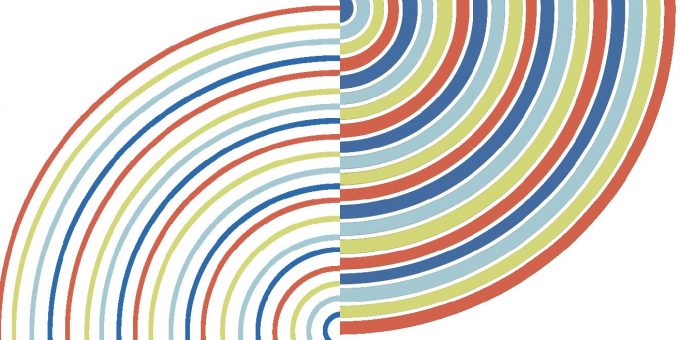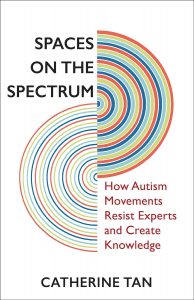
Who gets to speak for autism?
“Welcome to this warrior gang and we are bad motherfuckers!” exclaimed Jenny McCarthy to an audience of applauding parents. During an early autumn weekend in 2015, nearly 700 parents gathered at the InterContinental Hotel in Dallas to learn and exchange combat strategies. McCarthy, a media personality infamous for her vaccine skepticism, exhorted her audience to remain stalwart in this fight: “If something doesn’t work in your treatment along the way, you do not give up hope!”
Every parent in the room, including McCarthy herself, was fighting the same elusive enemy: autism, a lifelong developmental disability presently estimated to impact 1 in 36 children in the United States. While there is no “cure” for autism, the parents and practitioners who make up the alternative biomedical movement believe that they can “recover” autistic children with treatments. These treatments—none backed by scientific evidence—include diets, supplements, and experimental therapies involving hormones, stem cells, and parasites.
Meanwhile, autistic rights activists argue that there is nothing inherently wrong with autism—that autism is not a disorder to be avoided but a dimension of human difference, much like gender, sexuality, and eye color. On a Sunday afternoon in 2016, just outside Harvard in Brattle Square, 16 autistic rights activists and allies quietly held signs written in bright, colorful script: Disabled lives matter! Disability rights are human rights! Remember the dead and fight like hell for the living! It was the Day of Mourning vigil, an annual demonstration commemorating disabled people killed by their caregivers. The demonstration directs public attention to the cruel injustices that result from the devaluation of disabled lives. Beyond the right to merely live, autistic rights activists demand greater acceptance and an expansion of civil rights protections to increase access to employment opportunities, safe housing, healthcare, and meaningful participation in public life.
Despite global research efforts, there remains much uncertainty about autism’s causes, prevention, and treatment. However, two groups confidently—and defiantly—claim to have the answers. The alternative biomedical and autistic rights movements separately reject the way mainstream researchers, medical professionals, and therapists understand autism. Both groups criticize the prioritization of genetic research and behavioral therapy. However, these two groups have radically different designs for how autism should be reimagined—and as parents, practitioners, and autistic people, the issue is deeply personal and urgent.So, who gets to speak for autism?
In my recently released book, Spaces on the Spectrum: How Autism Movements Resist Experts and Create Knowledge, I explore how parents, doctors, and autistic people collectively challenge expert authority and develop their own understanding of autism. Drawing from over three years of ethnographic research, I argue that social movements are important spaces for rejecting mainstream understandings of autism—what it is, who the experts are, who has the right to represent autistic interests, how it should be studied, and how it should be approached.
The two movements are insulated spaces in which members reconstruct autism as either a dysfunction of the body or as an empowered identity. Collectively, movement members generate ideas about autism (its etiology, risks, and characteristics) and rely on each other to act on these ideas. Through the alternative biomedical movement, parents gain access to a network of specialized practitioners, private laboratories, compound pharmacies, and treatment purveyors. They use laboratory tests to render autism visible and quantifiable, even though scientific research has yet to identify unambiguous and reliable biomarkers. “Seeing” autism opens up opportunities to measure and assert control over it with alternative and experimental treatments. Furthermore, parents find support and community within the movement, which helps them persevere when friends and family question their methods.
 While the demands of autistic rights activists are completely different from those of the parent-oriented alternative biomedical movement, they employ similar strategies. The autistic rights movement is a space where members model autism acceptance within their community by normalizing autistic traits and nurturing autistic culture. At meetings and special events, members construct temporary spaces in which autism can be taken for granted—a luxury of ease that does not exist outside the movement. This means that autistic traits, like hand flapping, vocalizations, obsessions, and sensitivities, are not merely tolerated but celebrated. Building such a space also has a physical aspect; members engineer an environment that is mindful of autistic social and sensory needs. Autistic rights members collectivize around a shared diagnosis, but within this space, they transform autism from condition to culture, from disorder to neurodiversity.
While the demands of autistic rights activists are completely different from those of the parent-oriented alternative biomedical movement, they employ similar strategies. The autistic rights movement is a space where members model autism acceptance within their community by normalizing autistic traits and nurturing autistic culture. At meetings and special events, members construct temporary spaces in which autism can be taken for granted—a luxury of ease that does not exist outside the movement. This means that autistic traits, like hand flapping, vocalizations, obsessions, and sensitivities, are not merely tolerated but celebrated. Building such a space also has a physical aspect; members engineer an environment that is mindful of autistic social and sensory needs. Autistic rights members collectivize around a shared diagnosis, but within this space, they transform autism from condition to culture, from disorder to neurodiversity.
The expanse of the autism spectrum has given rise to multiple—often opposing—ideas about what is best for autistic people. Autistic adults and parents of autistic people present competing values and interests that complicate autism politics and ideas about well-being. Despite these vast differences, the alternative biomedical movement and the autistic rights movement align in one respect: fear. Disability is frightening because the United States does not provide adequate safety nets like universal health coverage, guaranteed housing, universal basic income, and quality home and community-based services. Disability is frightening because we have allowed it to be. Ultimately, movement members challenge experts and reimagine autism because they recognize the stakes are high and their options are limited.
Catherine Tan is in the Department of Sociology at Vassar College. She is the author of Spaces on the Spectrum: How Autism Movements Resist Experts and Create Knowledge.

Comments